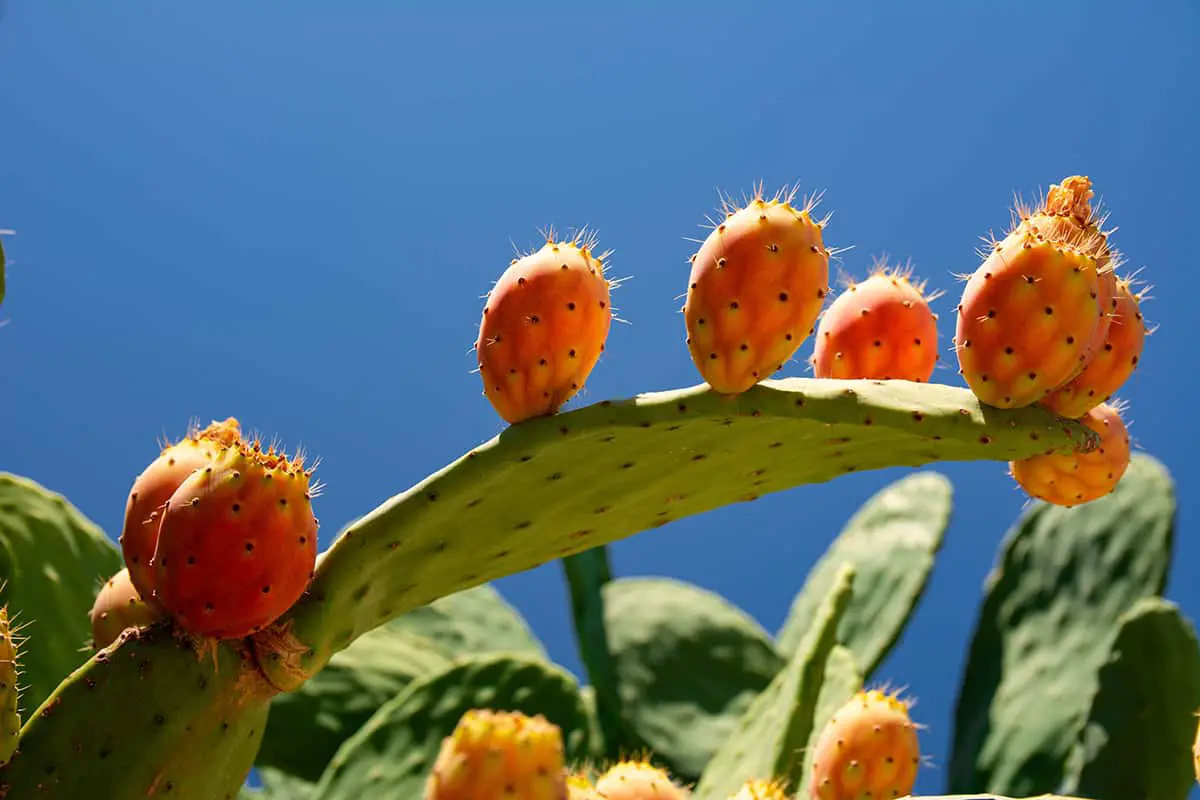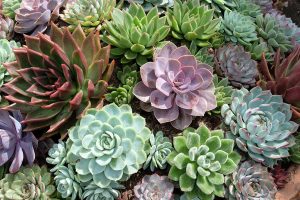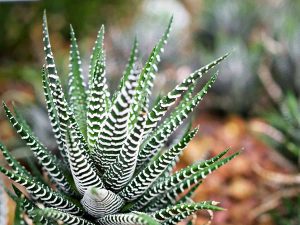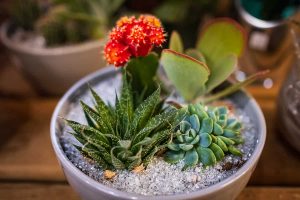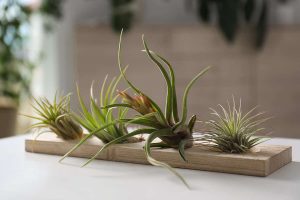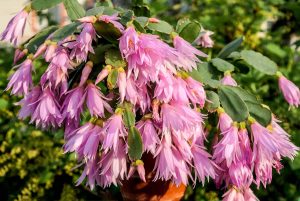Have you ever wondered about getting fruit from a cactus? If finding new and tasty fruits sounds good to you, you’re in the right place. We know a lot about different plants and their fruits, and we’re excited to share what we’ve learned about cactus fruits with you. They’re not just interesting; they’re delicious too!
This article is going to show you all about these cool fruits that grow on cacti and why you might want to try them.
Table of Contents
- Prickly Pear (Opuntia Spp.)
- Dragon Fruit (Hylocereus Spp.)
- Saguaro Fruit (Carnegiea Gigantea)
- Barbary Fig (Opuntia Ficus-Indica)
- Peruvian Apple Cactus Fruit (Cereus Repandus)
- Organ Pipe Cactus Fruit (Stenocereus Thurberi)
- Pitaya (Stenocereus Spp.)
- Cholla Buds (Cylindropuntia Spp.)
- Fishhook Barrel Cactus Fruit (Ferocactus Wislizeni)
- Peyote (Lophophora Williamsii)
- Frequently Asked Questions
Prickly Pear (Opuntia Spp.)
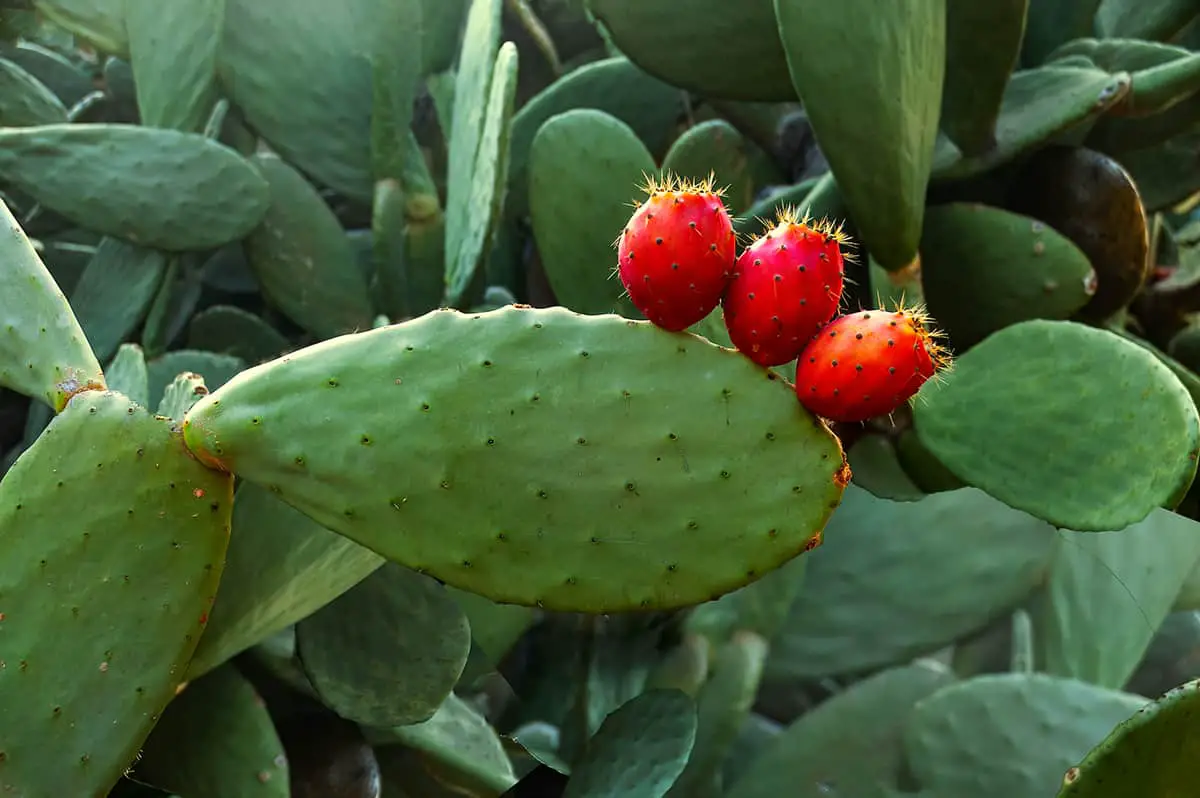
Prickly pear, a member of the Opuntia genus, is a fascinating fruit that grows on cacti. Found mainly in the United States, Mexico, and South America, these plants thrive well in various parts of the world. When you encounter a prickly pear cactus, you’ll see that it consists of rapidly-growing, flattened stems called pads. These pads are elliptical or oblong-shaped and can range in size, generally between 4 and 18 inches.
There are several species of prickly pear cacti, many of which produce edible pads and fruits. The fruits, known as tunas, are rich in antioxidants, fiber, vitamins, and minerals, making them a nutritious addition to your diet. When consuming the pads and fruits, it’s essential to prepare them properly to avoid the small, spiny hairs called glochids.
One popular prickly pear species found in Arizona is the Beavertail Prickly Pear (Opuntia basilaris). This cactus grows at elevations from sea level to 8,000 feet and possesses blue-grey pads with tan or reddish-brown spines. In contrast, the Eastern Prickly Pear (Opuntia humifusa) is native to the eastern USA, and its cactus can survive winters as far north as Ontario.
Caring for your prickly pear cactus requires a sunny, well-drained site and tolerance of sandy, alkaline soils. This drought-resistant plant can withstand heat and only tolerates wet conditions for a brief period. To propagate the prickly pear, you may use division since its pads can easily generate new plants.
Dragon Fruit (Hylocereus Spp.)
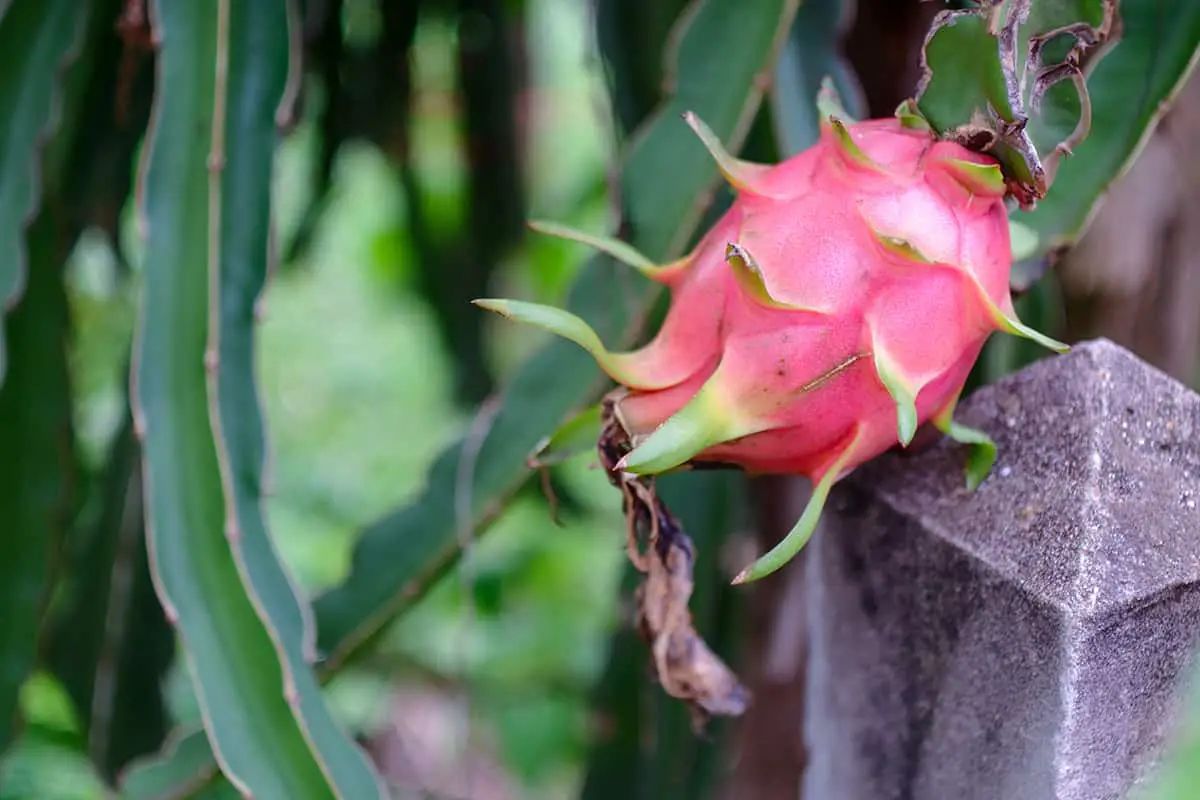
As a fruit lover, you might be surprised to learn that the delicious dragon fruit grows on a cactus.
Dragon fruit, also known as pitaya, is native to Mexico, Central, and South America. It’s a vine-climbing cactus species that has gained popularity in Florida as an alternative crop for citrus growers. The fruit has an eye-catching appearance, with its vibrant colors and unique shape, making it a desirable addition to any fruit basket.
In terms of planting, dragon fruit prefers sandy soil, which is abundant in many parts of Florida. To plant a new dragon fruit tree, you should remove a 3 to 10 ft diameter ring of grass sod and dig a hole 3 to 4 times the diameter and depth of the container it came in.
Dragon fruit offers more than just visual appeal. This exotic fruit is also packed with nutrients, including antioxidants, fiber, and vitamin C. Incorporating dragon fruit into your diet can provide you with numerous health benefits, making it a worthy addition to your fruit repertoire.
Embrace the world of cactus fruits and enjoy the unique taste and health benefits that dragon fruit has to offer. Now you know a bit more about this fascinating fruit and how it triumphs as a cactus delight.
Saguaro Fruit (Carnegiea Gigantea)
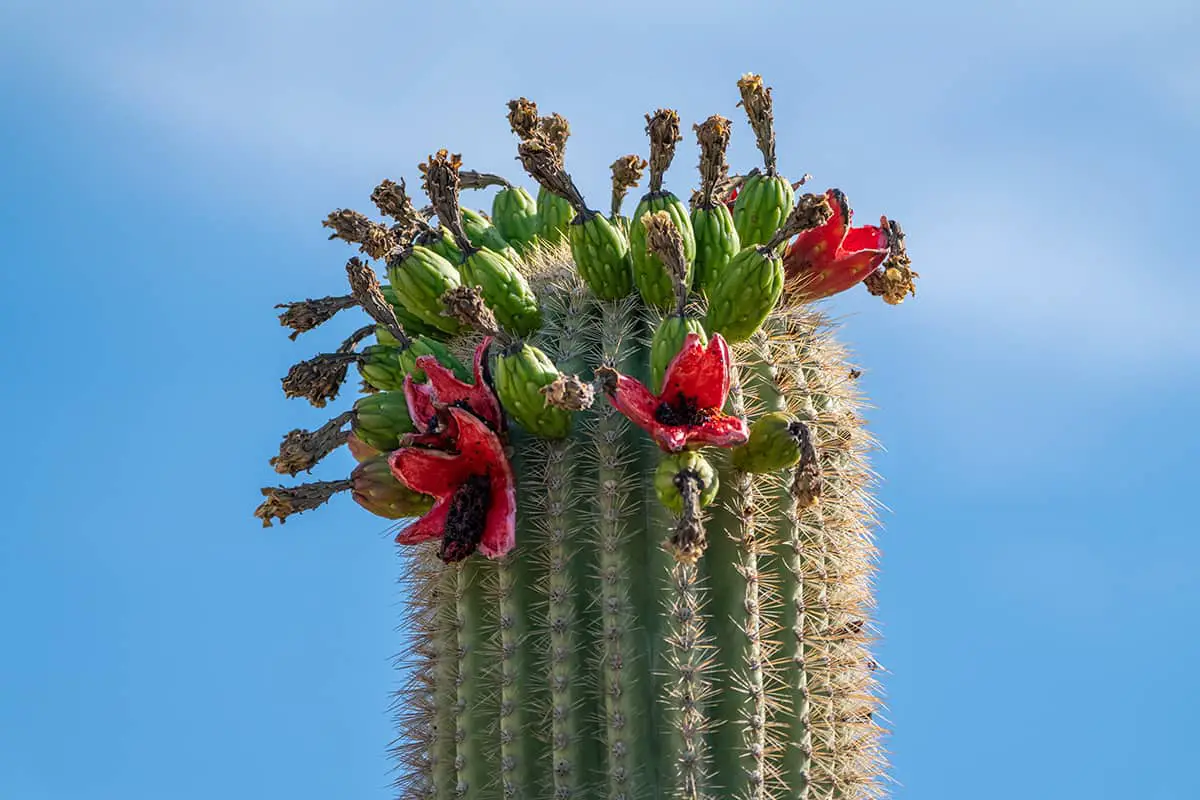
The Saguaro Cactus is a native plant to the Sonoran Desert. Growing on this majestic cactus, you can find the Saguaro fruit. Richly packed with nutrients, the fruit is an essential source of nourishment for indigenous people and wildlife in the area.
You can spot Saguaro fruits from their cylindrical, scaly appearance. As they ripen, their color changes from green to red. This transformation happens during the summer season when the fruit splits open. Measuring 2 to 3 inches in length, they create an enticing sight amid the relentless desert.
The fruit, formed from the Saguaro’s white nocturnal blossoms, has a historical significance with the Pima and Tohono O’odham Indians. They primarily use it for its edible quality but also utilize it in building materials and tool production.
Rich with nutrients and steeped in history, it is an integral part of the Sonoran Desert ecosystem.
Barbary Fig (Opuntia Ficus-Indica)
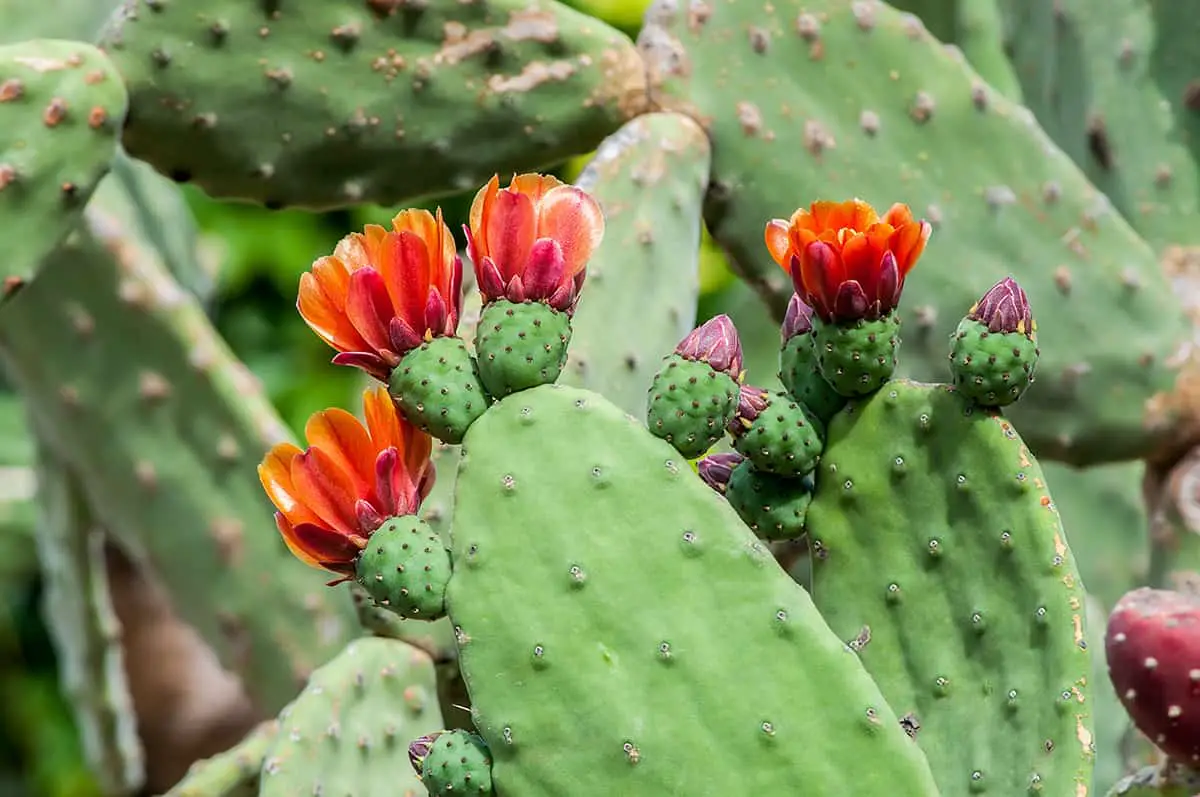
Barbary Fig is a fruit-growing cactus native to Mexico. Its scientific name is Opuntia ficus-indica, and it is part of the Opuntia genus, commonly known as prickly pears. This cactus species has grown in importance over the years, so much that it’s represented on the flag of Mexico.
When you imagine the Barbary Fig plant, picture a shrubby cactus that can grow up to 20 feet tall in ideal conditions of plentiful sun, light, and minimal water. The species typically thrives in coastal dunes, sandy riverbeds, and pine forests (source). Over time, it becomes a tree-like plant with a rapid growth rate, eventually reaching a height of 10-15 feet and a lifespan of over 80 years (source).
The Barbary Fig produces a commercially important fruit with a myriad of uses. It is not only tasty and nutritious but also serves as the primary source of dye in various industries. Cultivation of this cactus hybrid as a food crop has expanded worldwide, leading to its increased popularity and global recognition.
Peruvian Apple Cactus Fruit (Cereus Repandus)
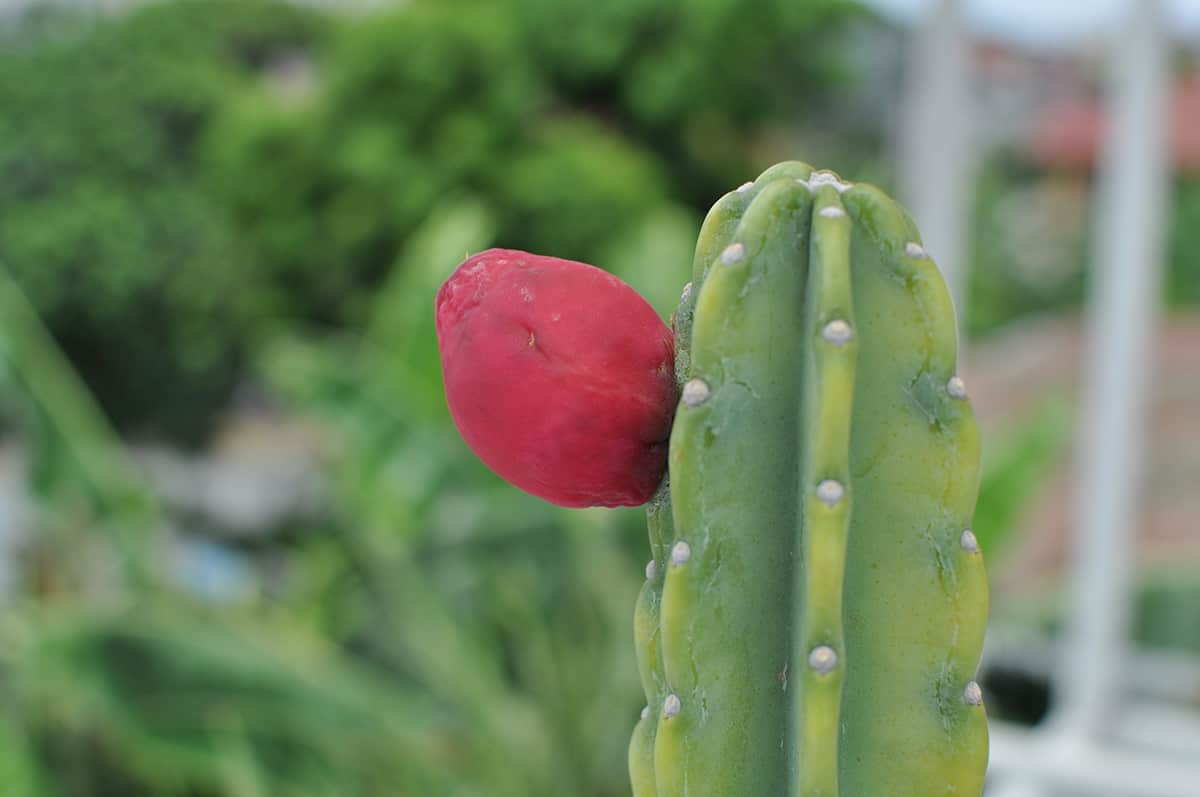
Peruvian apple cactus fruit, or Cereus repandus, is a unique fruit that grows on a tree-like, branching cactus. This cactus can reach up to 40 feet tall and 15 feet wide and is native to Brazil, Paraguay, Uruguay, and Argentina. The fruit itself is not only an interesting sight but also provides various benefits for those who consume it.
The fruit of the Peruvian apple cactus is round or oval in shape, with a bright red or yellow peel. Its flesh is white and juicy, containing numerous small, black seeds. The taste of the fruit is often described as mildly sweet, similar to a mix of watermelon and pear. As a result, it makes for a refreshing and delicious treat, especially on a hot day.
In addition to its appealing taste, the Peruvian apple cactus fruit also offers several nutritional benefits. It is low in calories, making it an ideal choice for those watching their weight or seeking a healthier snack option. Furthermore, the fruit is a good source of essential vitamins and minerals, such as vitamin C, calcium, and potassium. These nutrients contribute to overall health and can be particularly beneficial for people looking to boost their immune systems or maintain strong bones and muscles.
Growing your own Peruvian apple cactus is an exciting way to enjoy this unique fruit. The cactus is well-suited for arid climates, making it a low-maintenance addition to your garden. Just remember that the plant is sensitive to frost, so it’s important to protect it during colder temperatures to ensure a bountiful harvest.
Organ Pipe Cactus Fruit (Stenocereus Thurberi)
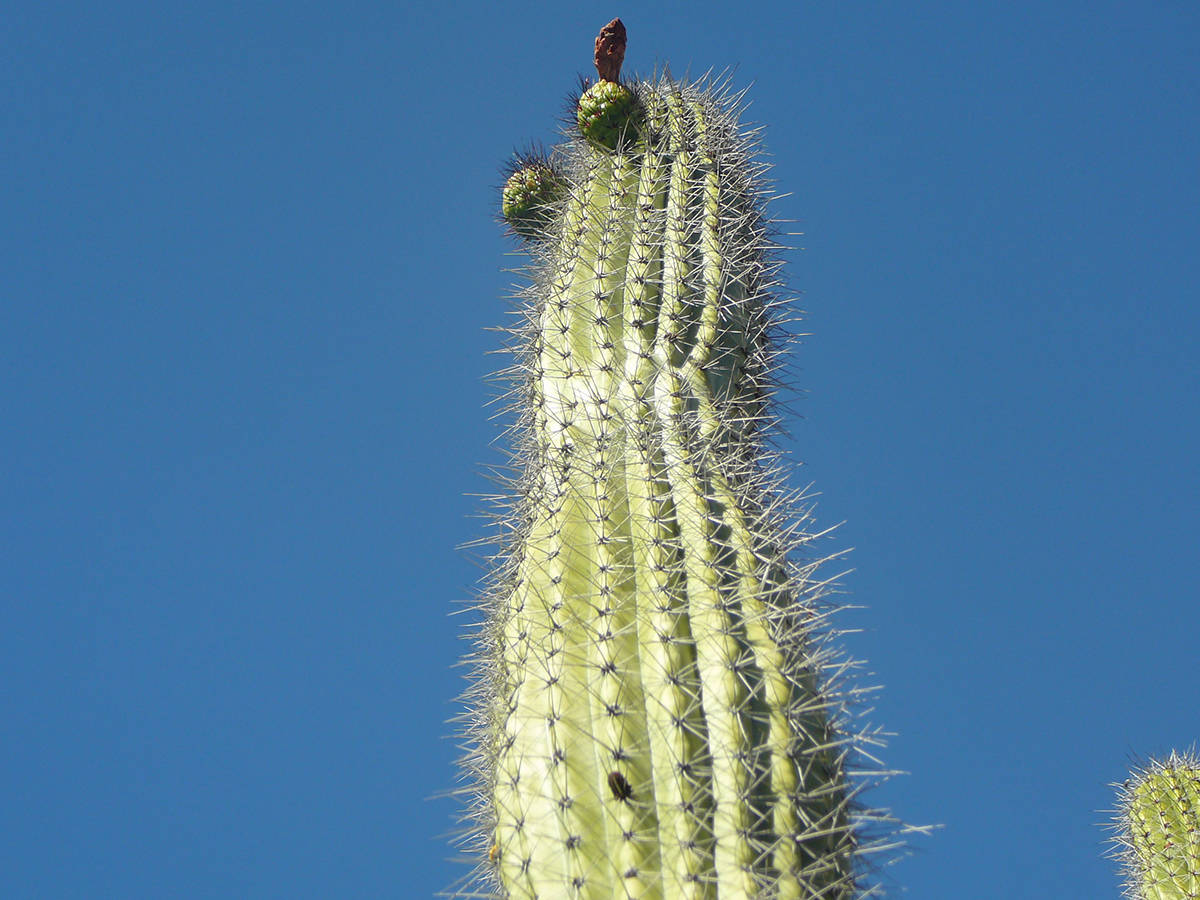
The fruit of the Organ Pipe Cactus (Stenocereus thurberi) is an edible, delicious, and unique treat. In the summer (June to August), this cactus produces red fruits called pitahaya dulce. The fruits can often grow as large as oranges and offer a taste similar to watermelon. They are consumed by both humans and animals, like birds and rodents.
Organ Pipe cactus mainly grows in the Sonoran Desert of the southwestern United States and Mexico. This cactus is a slow-growing plant and can reach an impressive height of 15 feet with a width of 12 feet. The plant has vertical, olive-green columns, making it easy to recognize.
As a nocturnal bloomer, the Organ Pipe cactus has white or slightly purplish flowers, which open at night and emit a sweet fragrance. The flowers are pollinated by insects, primarily moths and butterflies, as well as long-nosed bats. You can expect this cacti species to reach the blooming stage when it is around 35 years old.
When collecting Organ Pipe cactus fruits, make sure to protect your hands from the spines, or wait until they lose their spines when ripe. The fruits have a bright red pulp filled with small, dark brown seeds. These seeds can be eaten along with the fruit or separated for other purposes.
Pitaya (Stenocereus Spp.)
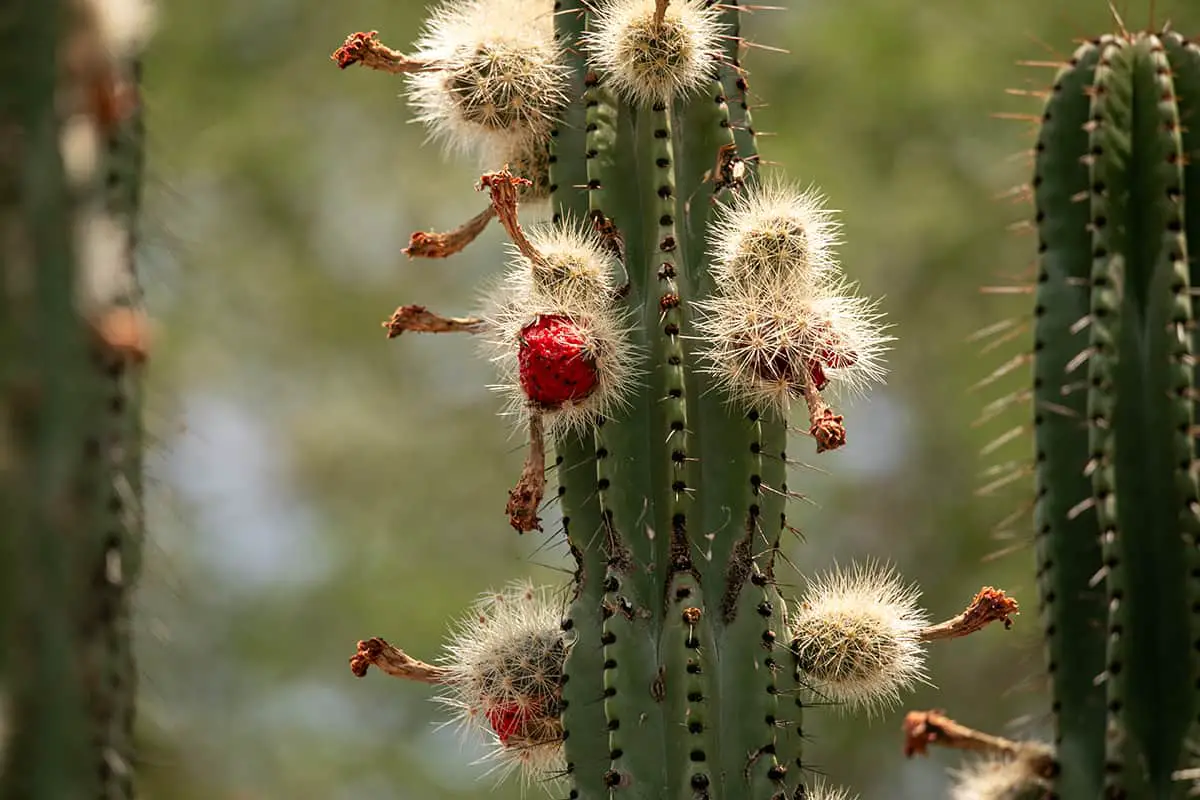
Have you heard of the pitaya, a fruit that grows on cactus? This exotic fruit is sometimes called dragon fruit or strawberry pear. It belongs to the Stenocereus genus of cacti plants, primarily found in tropical and subtropical regions.
Growing pitaya is possible in various climates, such as the southern coastal areas of California. The vining cactus adapts well and can be a profitable alternative for growers looking to diversify their crops. A key factor to keep in mind when planting pitaya in sandy soil, like that of Florida, is to dig a hole three to four times as deep and wide as the plant’s container. This loosens the soil, enabling roots to expand easily.
The taste of your freshly grown pitaya will be rewarding. Its sweetness is often compared to other fruits like lychees and kiwis; it also has a similar acidity to strawberries and oranges. Sporting a vibrant peel and deliciously edible pulp, the fruit accounts for roughly 18-24% of the fresh weight in S. queretaroensis species.
For your pitaya plant to thrive, a recommended fertilizer program in regions like Taiwan may include well-composted steer manure at nine pounds per plant every four months, starting in April. Additionally, a commercial 13-13-13 fertilizer at 3.5 ounces per plant can be used.
Cholla Buds (Cylindropuntia Spp.)
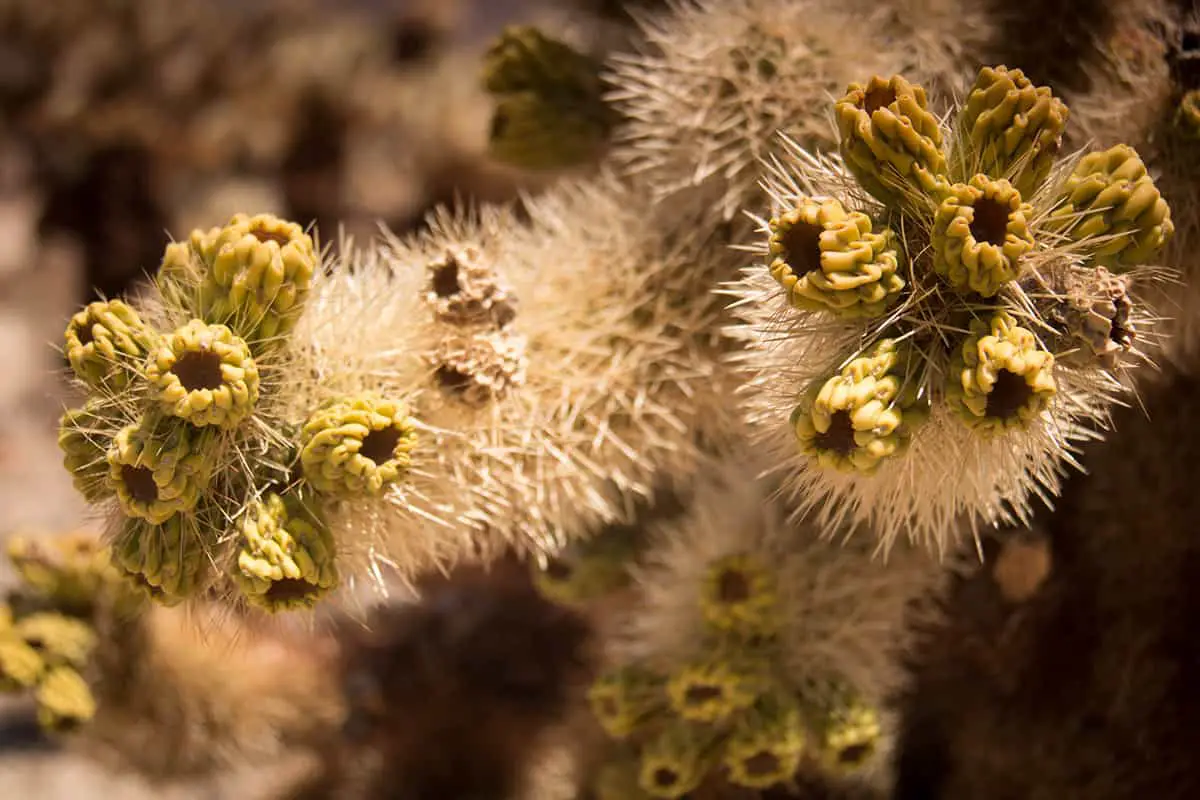
Cholla buds are the edible flowers of the Cylindropuntia species of cactus plants. These cacti grow in various regions of Mexico and the southwestern United States. The buds are harvested in the spring and boast multiple nutritional benefits.
These edible flowers are high in calcium, rich in fiber, and a good source of vitamins and minerals. To prepare cholla buds, you should first remove the spines and then either boil or steam them. If desired, you can also roast, pickle, or dry them for extended storage. The buds’ taste is often described as a mix of asparagus, artichoke, and okra flavors.
In the traditional diets of Native Americans, cholla buds have a long history and importance. They have been consumed by tribes such as the Tohono O’odham and the Pima for centuries. Today, you can find them in a variety of dishes, from salads to sauces, adding a unique taste and nutritional boost to your meals.
Besides their culinary uses, cholla plants play a crucial role in the ecosystem. They provide food and habitat for many animals and insects, promoting biodiversity in the areas where they grow.
Fishhook Barrel Cactus Fruit (Ferocactus Wislizeni)
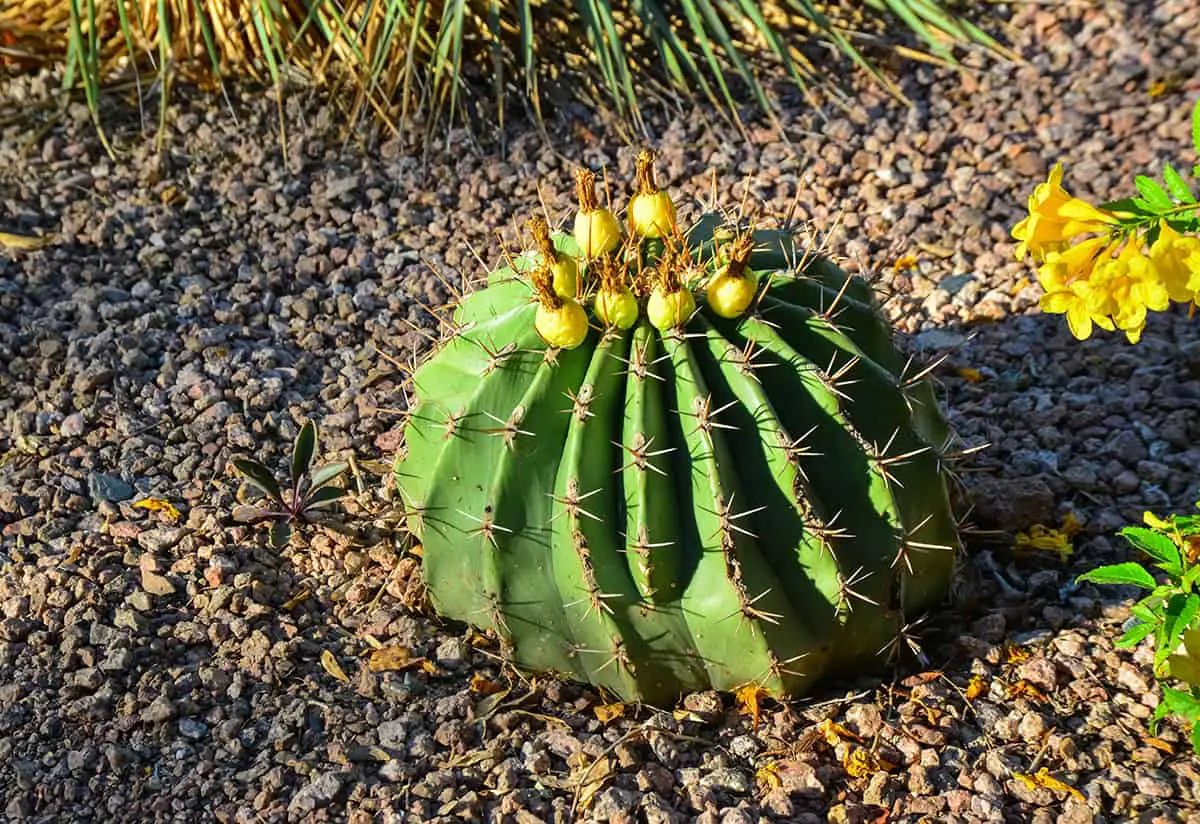
Fishhook Barrel Cactus fruit, also known as Ferocactus Wislizeni, is a native of the southwestern United States and northern Mexico. You’ll find it in well-drained, sandy or gravelly soils, thriving in full sunlight.
The fruits of this cactus are barrel-shaped and yellow, attracting various animals like mule deer and collared peccary. In fact, during winter, the Fishhook Barrel Cactus fruit makes up a significant portion of the mule deer’s diet. These fruits are edible and can be consumed by humans too. People use them in dishes like soups or eat them alone. Additionally, their seeds are nutritious and can be ground into flour.
Fishhook Barrel Cactus has beautiful, showy flowers that bloom in the summer. It propagates from seeds and can be easily transplanted into rock gardens or combined with other cacti.
Peyote (Lophophora Williamsii)
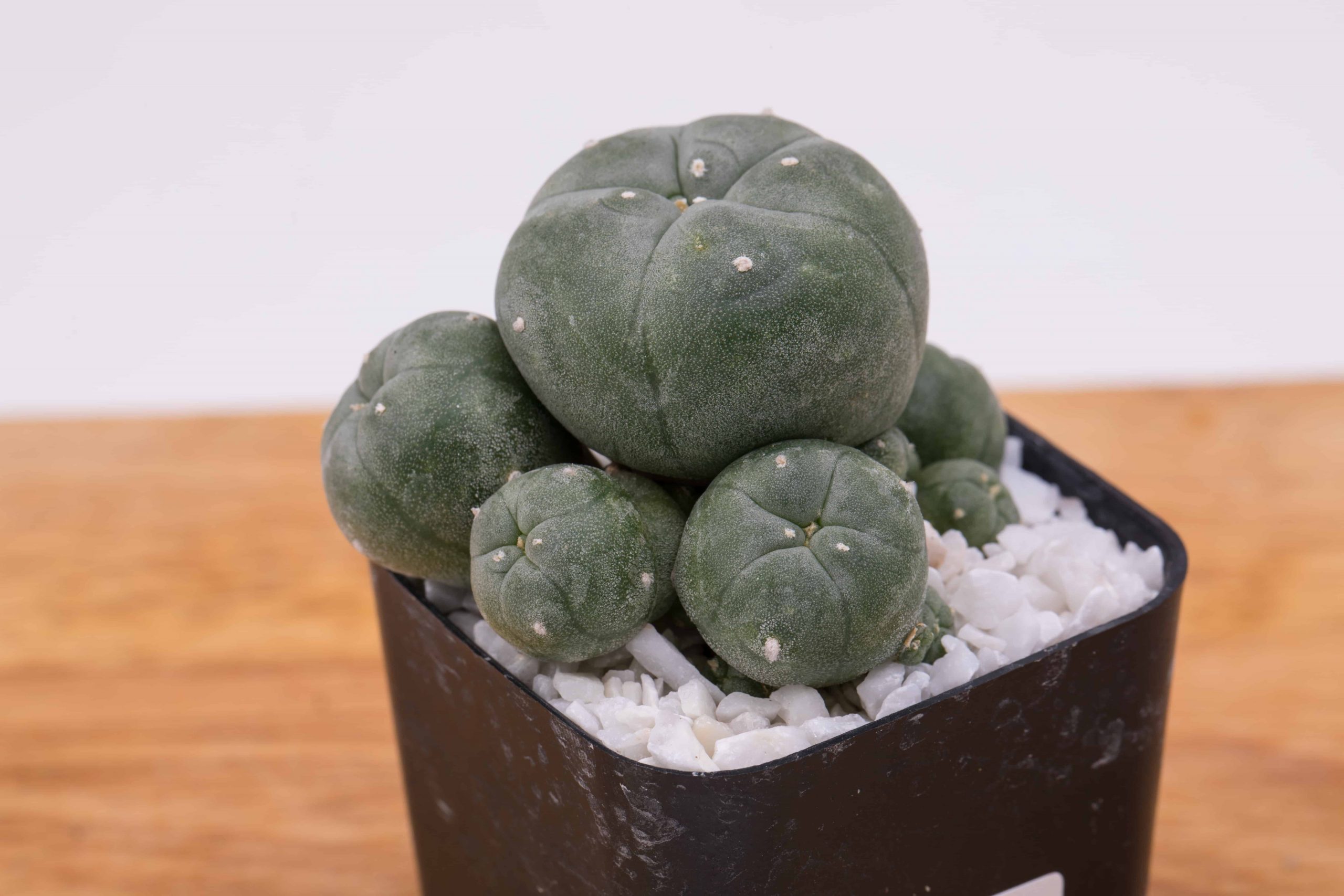
Peyote, also known as Lophophora Williamsii, is a small, spineless cactus native to the southwestern United States and northern Mexico. Its natural habitat spans from the Rio Grande area of Texas to as far south as San Luis Potosi, Mexico. One notable characteristic of Peyote is its unique rounded shape, which differs from the more typical branching cactus form.
The main reason for Peyote’s cultural significance is its use in Native American ceremonies. This is due to its rich and diverse chemical profile, which contains numerous alkaloids. Among these alkaloids is the psychoactive compound mescaline, known to produce powerful hallucinations when ingested.
The use of Peyote in ceremonies has been prevalent among Native American tribes for many years. It serves as a testament to the power of plants over people and provides spiritual insight in a variety of contexts. The cactus is also a known symbol of resilience in the face of harsh desert environments.
Cultivating Peyote cacti requires attention to particular details, such as substantial amounts of sunlight and well-draining soil. The plant prefers a slow growth rate and remains relatively small even when fully mature. Care should be taken to ensure the plant is not consumed accidentally, as it is considered poisonous due to its alkaloid contents.
Frequently Asked Questions
What types of fruits can be cultivated on indoor cacti?
Indoor cacti can produce various fruits, depending on the species you choose to grow. Some popular cactus fruits cultivated indoors include the prickly pear and the dragon fruit. The cactus family includes about 2,000 species, offering a range of possibilities for indoor cultivation.
What are the health benefits associated with consuming cactus fruits?
Cactus fruits offer various health benefits, such as being rich in antioxidants, vitamins, and minerals. They can also help lower cholesterol, support weight loss, and improve digestion. For example, prickly pears are high in dietary fiber, vitamin C, and magnesium, while dragon fruits are rich in vitamin C, iron, and calcium.
Can you eat the seeds of cactus pears?
Yes, you can eat the seeds of cactus pears. They are small and crunchy, and you may find them mixed with the fruit’s juicy pulp. While some people chew the seeds, others prefer to swallow them whole or blend them into a smoothie to consume the nutritional benefits they provide.
How do you differentiate between the fruit of the prickly pear and the dragon fruit?
Prickly pear fruits are usually oval-shaped berries with spines covering a colorful outer skin that can vary in shades of green, yellow, or red. They typically grow 2-3 inches in length. Dragon fruits, on the other hand, are larger with a vibrant red, yellow, or pink outer layer and white or red inner flesh speckled with tiny black seeds. Its outer skin is covered in unique, scale-like patterns, making it visually distinctive.
